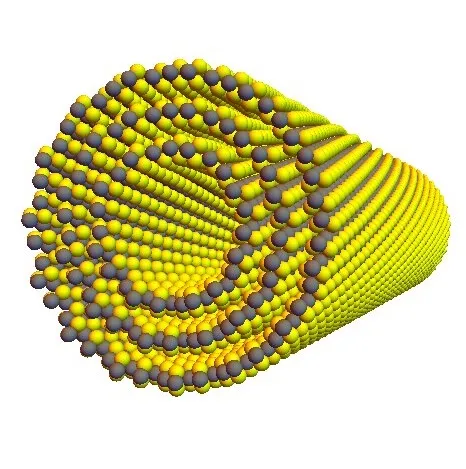Scientists discover photovoltaic nanotubes
Aug 29, 2019 10:13 PM ET
- An international team of researchers led by the University of Tokyo has discovered a new material which, when rolled into a nanotube, generates an electric current if exposed to light. If magnified and scaled up, say the scientists, the technology could be used in future high-efficiency solar devices.

Scientists investigating various functions for a semiconductor nanotube have discovered one such material – made from tungsten disulfide – exhibits the bulk photovoltaic effect (BPVE) at an efficiency far higher than in other materials known to exhibit the phenomenon. BPVE occurs when a current is generated throughout the entire structure of a material rather than relying on a junction between materials.
“Essentially our research material generates electricity like solar panels but in a different way,” said University of Tokyo professor Yoshihiro Iwasa. “We demonstrated for the first time nanomaterials could overcome an obstacle that will soon limit current solar technology.”
Tungsten disulfide only exhibits a photovoltaic effect when rolled into nanotubes. The bulk photovoltaic effect occurs because the nanotube is not symmetrical and the current generated has a preferred direction to flow in. Other materials with a similar ‘broken inversion symmetry’ structure have been shown to exhibit BPVE but Iwasa and his team found that with tungsten disulfide nanotubes, the conversion efficiency was much higher than previously observed.
“Our research shows an entire order of magnitude improvement in efficiency of BPVE compared to its presence in other materials,” Iwasa said. The study has been published in Nature.
In theory, BPVE could provide scientists with a route to higher efficiency solar cells. However, the efficiencies observed so far are too low to move beyond the lab. Iwasa also noted, scaling up the nanotube to a relevant size represents a significant challenge.
“Despite this huge gain, our WS2 nanotube cannot yet compare to the generating potential of p-n junction materials,” he added. “This is because the device is nanoscopic and will be difficult to make larger. But it is possible, and I hope chemists are inspired to take on that challenge.”
Also read
- UbiQD Secures Landmark Quantum Dot Deal with First Solar
- Astronergy Invests $53M in Tandem Solar Cell Project
- ARENA Unveils $39M Solar Innovation Funding Round
- CNNP Optoelectronics brings utility-scale perovskite modules out of the lab
- Low-Temperature Sequential Deposition Lifts Inverted Perovskite Solar Cells Efficiency Record
